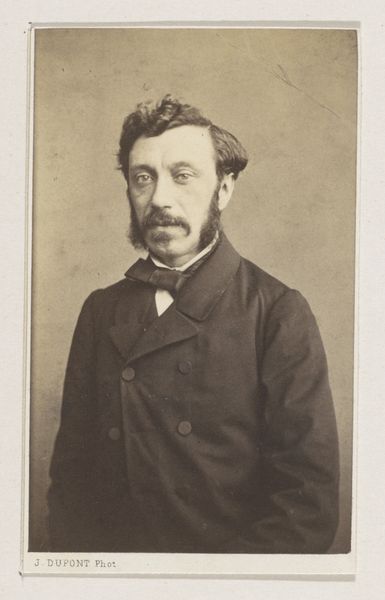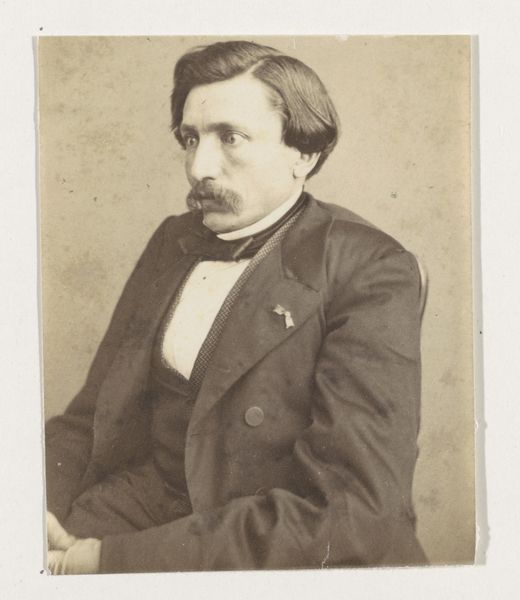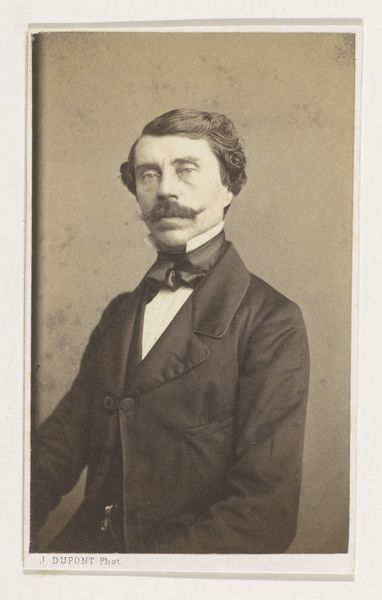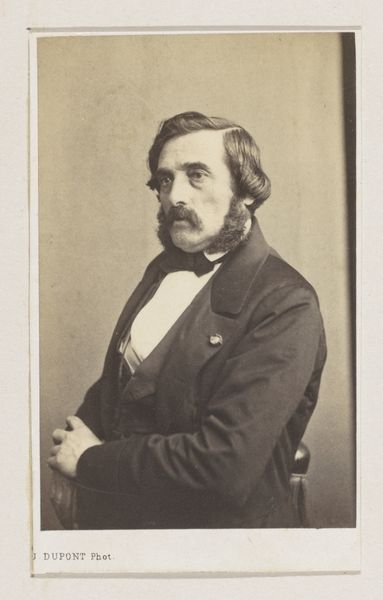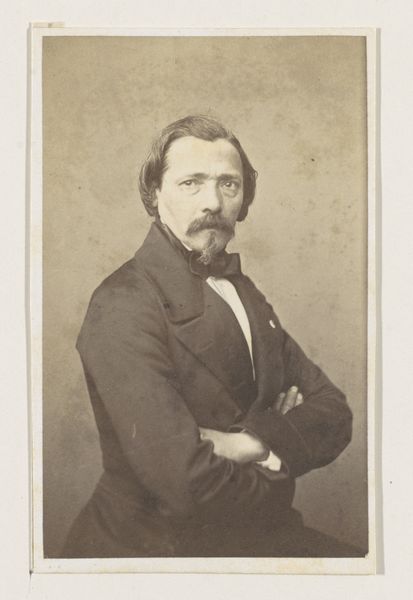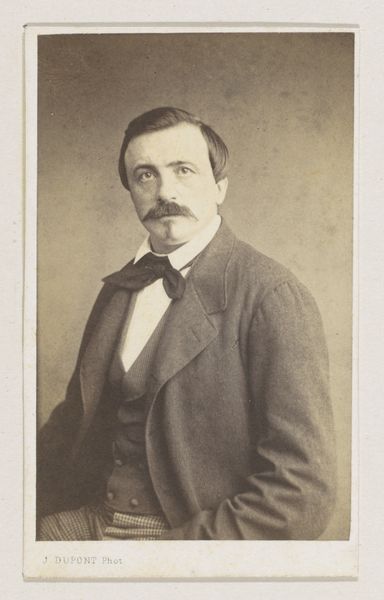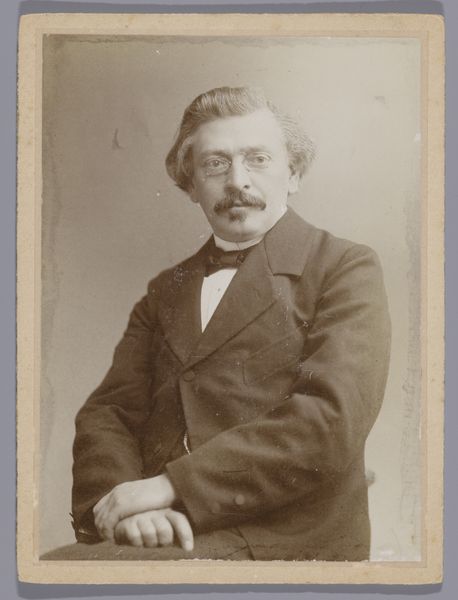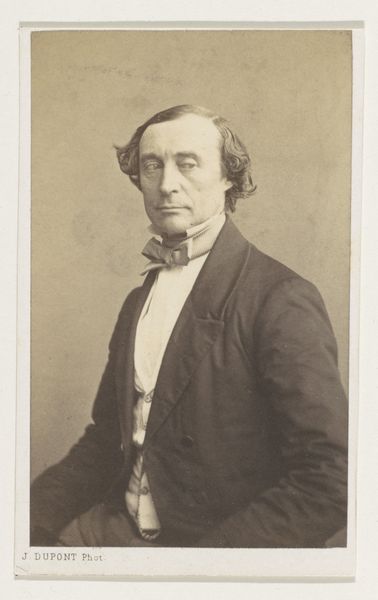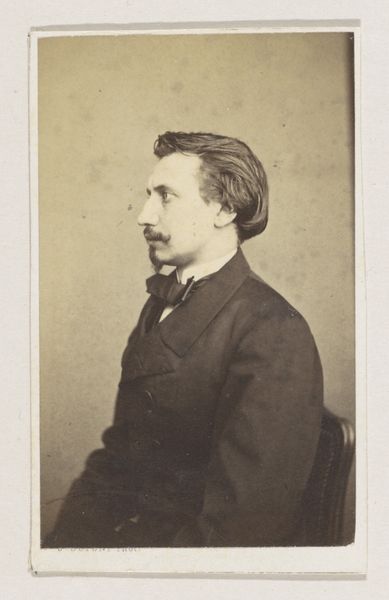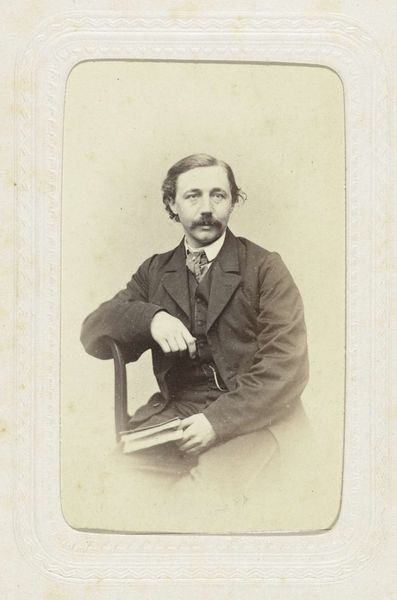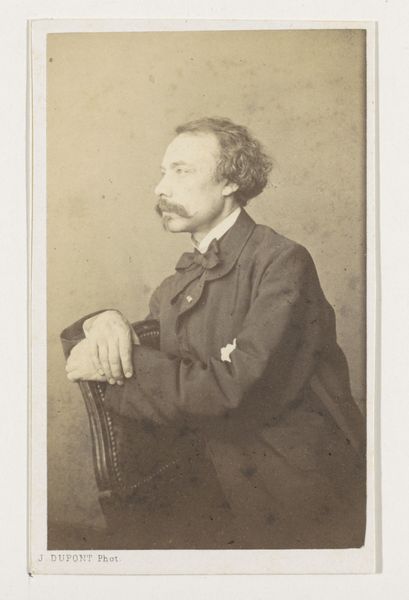
Dimensions: height 101 mm, width 62 mm
Copyright: Rijks Museum: Open Domain
Editor: Here we have Joseph Dupont’s "Portrait of the Painter and Printmaker Joseph Moerenhout," a daguerreotype from 1861. It strikes me as a rather formal image, almost defiant, with the subject’s arms crossed. What stands out to you? Curator: I notice the immediate tension between the relatively new technology of photography and the older conventions of portraiture. This piece speaks volumes about the social status of artists at the time. To be captured in a daguerreotype signaled a certain level of societal importance, accessible to a growing middle class, thus disrupting aristocratic dominance in portraiture. Dupont is not just presenting Moerenhout but also subtly affirming the rising importance of the artist in 19th-century society. Doesn't his pose feel almost… performative? Editor: Yes, there's a self-awareness to it. He knows he's being presented in a certain way. Is that common in photography from this period? Curator: Absolutely. The relatively long exposure times of early photography often demanded deliberate poses, reinforcing established visual codes. Early photography had to prove its merit as a valuable and prestigious medium. It wasn't merely documentation but a means of shaping and projecting identity. And think about the role of exhibitions during this period—how did displaying such portraits influence the public’s perception of artists and the photographic medium? Editor: That's fascinating. It sounds like this image is less about Moerenhout as an individual, and more about the changing role of the artist in the grand scheme of things. Curator: Precisely. And consider Dupont's position. He is not only immortalizing Moerenhout but is also cementing his own place within that social and cultural moment, wielding his artistic influence behind the camera. Editor: This gives me so much to think about; I will consider what it meant to display artists, and not only nobles and affluent patrons. Curator: I'm glad this portrait and its historical context resonated with you. There's so much to unpack!
Comments
No comments
Be the first to comment and join the conversation on the ultimate creative platform.
